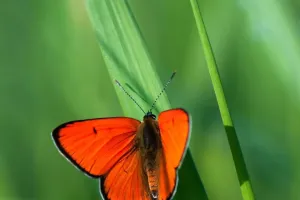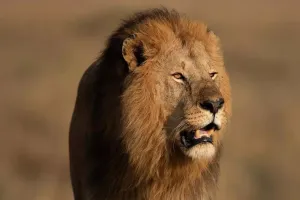Speaking of owls, we usually have such an image in our minds: big eyes, round faces, and night elves with cat-like ears. However, there is a kind of owl that subverts people's concept. They are small and cute, and they are the favorite bird of Athena, the goddess of wisdom in ancient Greek legends, that is the little owl.
The little owl is a bird belonging to the genus Little Owl in the family Owlidae. It is a very small owl with a body length of only about 22 cm, making it the smallest owl in the world. They are a protected species on the UN's List of Threatened Wildlife. They are widely distributed and are commonly found in various wildernesses in Eurasia and North Africa, such as wetlands, grassy flats, barren hills, rock piles, semi-desert areas, and even plateaus at an altitude of 4,000 meters. In addition, they also often inhabit near farmland or villages, prefer to be active in the morning and evening, and are active at night, and fly quickly.
Little owls are brownish-yellow, dotted with large and small white spots.
They have an indistinct face plate, no ear feather tufts, and unnoticeable ruffles. The upper body is gray-brown to tan, with white spots, especially on the top of the head, the eyebrow lines and between the eyes are white, and the back neck has an incomplete white collar.
The lower body is gray, without stripes, and the two flanks have horizontal spots, hence the name, but the middle part of the abdomen is pure white without spots. Their irises are golden yellow, the corners of the mouth are green, the peaks of the mouth are sometimes darker and sometimes yellower, the cere is green or greenish-brown, and the feet are yellowish green, lead green or dull yellow.
This little owl always has big yellow eyes, alert and cute, and anyone who takes a look is fascinated by them. Because of its small size, the little owl can burrow into many caves and building gaps to breed.
Despite the petite size of the little owls, these palm-sized furballs are birds of prey! Little owls have the "standard" that all raptors have. They have extremely strong hooks, sharp hooked mouths, and keen senses. Within its home range, it will chirp loudly or actively attack intruders to defend its territory. When chasing prey, it can not only pounce from the air like other raptors, but also use its running legs to pursue.
Small owls mainly rely on powerful and sensitive vision to hunt. They like to stand high and overlook the vast ground, and when small animals crawl on the ground or birds fly low in the sky, they rush out like wild horses, holding their prey with their strong claws. Little owls' diet includes almost everything smaller than them, such as rodents, birds, insects, small amphibians and reptiles. For the brave little owls, preying on small animals similar to them is not a difficult task.
From April to mid-May each year, is the breeding season for the little owls. Females will intermittently lay 3 to 6 white eggs over a two-day period. During the 22 to 28 day incubation process, the females hatch alone, while the males prey and carry the prey into the nest. If food is plentiful, the parents will take shifts to hatch together. After hatching, they hunt wildly and feed their babies.


